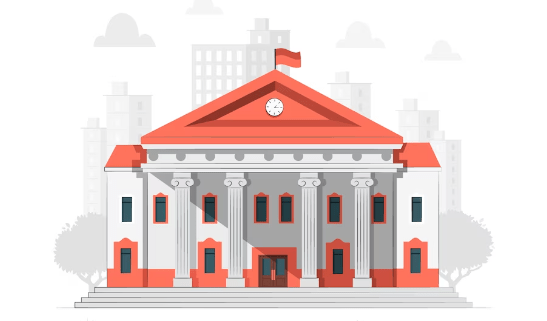District Administration - 1
Hey there Mumbai University SYBA IDOL students! Today, we’re digging into – “District Administration”. So, what’s the plan? First off, we’ll break down what District Administration is and why it matters – think of it as the behind-the-scenes crew making sure everything runs smoothly in your district.
Now, let’s step back in time to the British era. We’re going to explore how District Administration evolved back then, kind of like understanding the old-school version of how things were managed. Then, we’ll fast forward to post-Independence, checking out what changed. It’s like looking at a photo album and seeing how the district admin story developed over time.
But here’s the deal – no need for confusing language or complicated stuff. We’ll keep it simple and straightforward. So, get ready to explore District Administration in a way that’s as easy as chatting with friends. So, SYBA IDOL Mumbai University students, get ready to unwrap the mysteries of “District Administration” with customized IDOL notes just for you. Let’s jump into this exploration together


QUESTION 1 :- Define the concept of 'District Administration and explain its nature
Introduction:
District administration is like the heartbeat of local governance, working at the grassroots level to make sure government decisions actually happen. It’s where the action takes place, turning laws and policies into real-life changes that impact us all. This administrative superhero holds a key spot in the big picture, making sure everything runs smoothly from the top down.Nature of District Administration:
-
Foundational Role in Governance:
- Definition: District administration is where the nitty-gritty of public administration gets done, sort of like the engine room of the government ship.
- Implementation: It’s the frontline team, putting into action all the big decisions that come from higher-ups.
-
Agent of Local Planning and Development:
- Economic Perspective: Economists see district administration as a big player in local planning and development – it’s like the captain steering the ship toward economic growth.
- Local Initiatives: It’s the go-to for kickstarting and overseeing projects that make our neighborhoods better.
-
Crucial Player in Rural Dynamics:
- Political Significance: In the political arena, the district takes center stage, influencing rural politics and how money moves.
- Governance and Leadership: It’s a hub for local leadership, training up the next generation of decision-makers.
Conclusion:
In a nutshell, district administration wears many hats. It’s the glue that sticks government decisions to real-life actions, the driving force behind local development, and the backstage manager of rural politics and economics. Its importance spreads across different fields, showing just how essential it is for making sure things run smoothly right where we live. So, next time you hear about district administration, remember – it’s the unsung hero making our communities work.QUESTION 2 :- Trace the evolution of the district administration during the British period.
Introduction:
Alright, let’s talk about the journey of district administration in India during the British days – it’s like looking back at a history book, but don’t worry, we’re going to keep it simple. Back then, things were kind of like a puzzle, with the British trying to figure out the best way to run the show. So, today, we’re going to unravel this puzzle and understand how the district administration evolved during the British period.Evolution of District Administration:
1. Centralization and Early Administration:
- Strategic Centralization: In the beginning, the British liked big districts, thinking it would make their rule stronger and more organized.
- East India Company’s Initiatives: The East India Company, which was a big player back then, managed important areas like Madras, Bombay, and Bengal through its officials.
2. Transition to Territorial Power:
- Key Historical Events: Important battles like Plassey and Buxar changed things. The Company shifted from just being a trading company to becoming a big player with control over territories.
- Revenue Control: Now, the Company wasn’t just about trade; they had a say in the money matters of Bengal, Bihar, and Orissa, expanding their administrative duties.
3. Rural Government System:
- Initial District System: The British introduced a Rural Government system, focusing on collecting money and splitting up government jobs in districts.
- Adaptation to Change: As time went on, the British realized they needed to change things up for efficiency. So, they adapted, and this change led to the district administration system we see today.
Conclusion:
Summing it up, the evolution of district administration in the British period was like a rollercoaster ride. They started with big plans for large districts but adjusted along the way. From battles that reshaped their role to realizing the need for efficiency, this journey laid the groundwork for the district system we have today – a system that’s more about working smartly and locally. So, there you have it – the story of how district administration in India got its groove during the British era!QUESTION 3 :- Give an account of the changes in the district administration in the post-Independence period.
Introduction:
The evolution of the district administration system in India, especially after we got our Independence. It’s like looking at a glow-up – how things changed and got better. So, let’s dive in and explore how the district administration system adapted and improved post-Independence.
Evolution of District Administration:
1. Decentralization and Panchayati Raj:
- Constitutional Amendments: After Independence, we decided to shake things up a bit. Some smart changes were made to the Constitution in 1992 – the 73rd and 74th Amendments. These changes gave power to local folks through Panchayati Raj Institutions (PRIs) and Urban Local Bodies (ULBs).
- Empowering Local Governance: The idea was to let communities have more say in decision-making. PRIs were like the local superheroes taking charge of things.
2. Community Development Programs:
- Introduction of CDPs: Post-Independence, we faced some rural development challenges. So, we introduced Community Development Programs (CDPs). These were like teamwork projects where local communities played a big role in planning and doing development projects.
3. Administrative Reforms:
- Efficiency Measures: We realized we needed to get things done better and faster. So, we made some cool changes like streamlining processes, improving how services are given, and even using technology to make governance smoother.
4. Role in Social Welfare:
- Inclusive Policies: The district administration didn’t just stop at making things efficient. They actively joined hands in implementing inclusive policies, focusing on helping those who needed it the most. Think education, healthcare, and employment – they wanted everyone to benefit.
